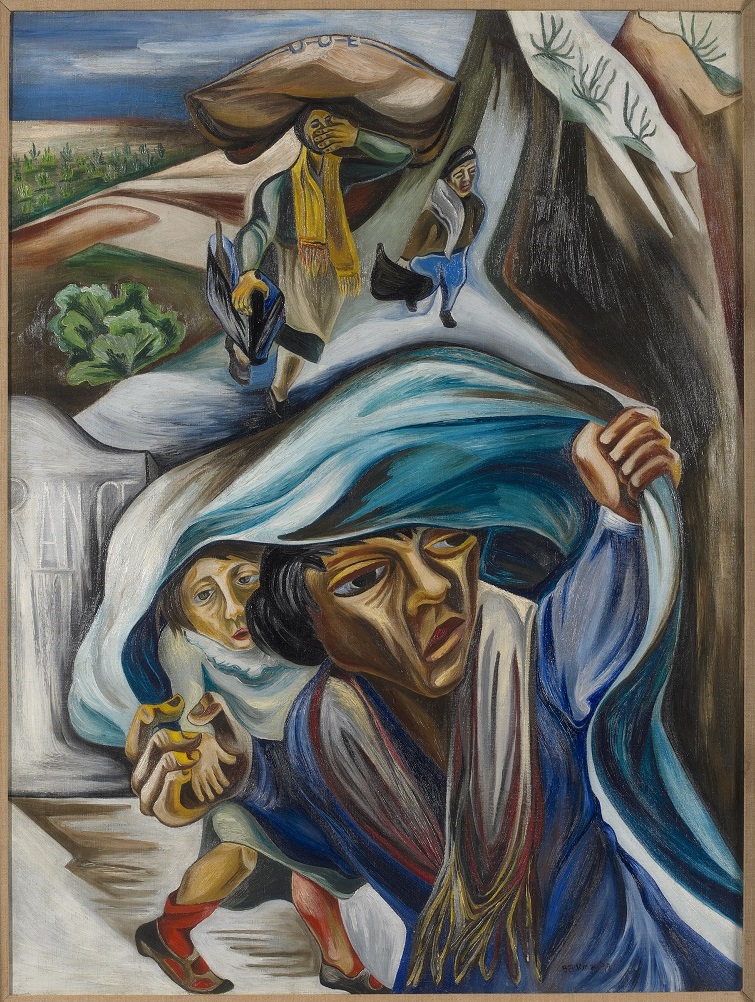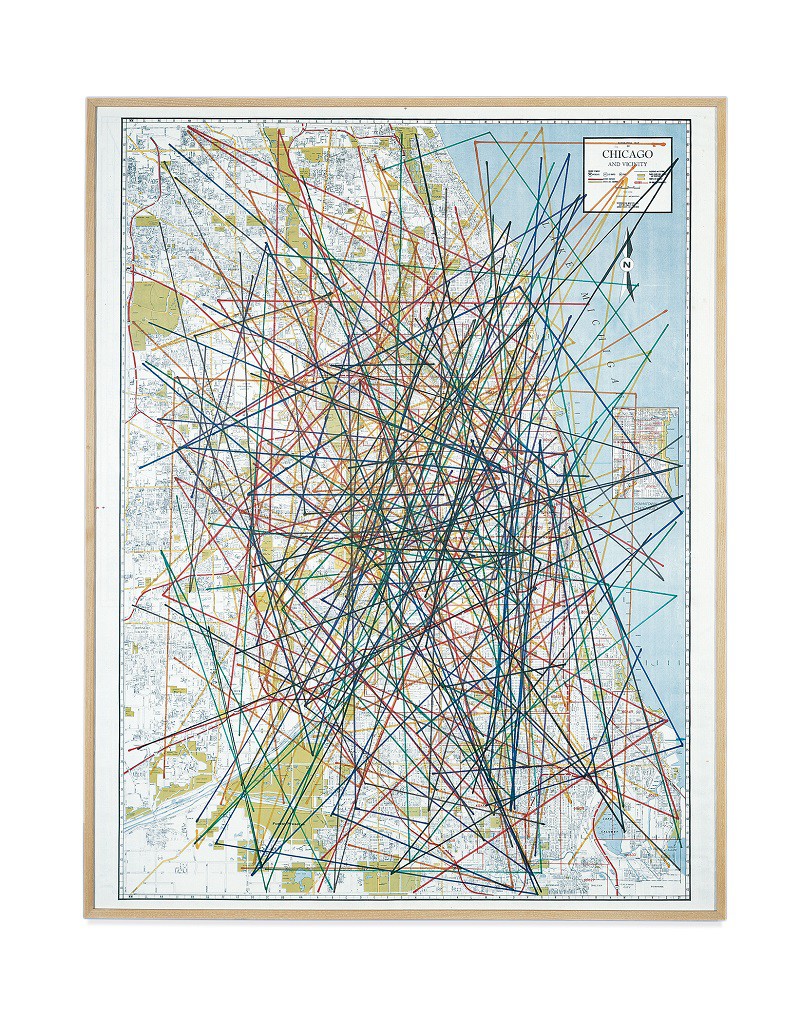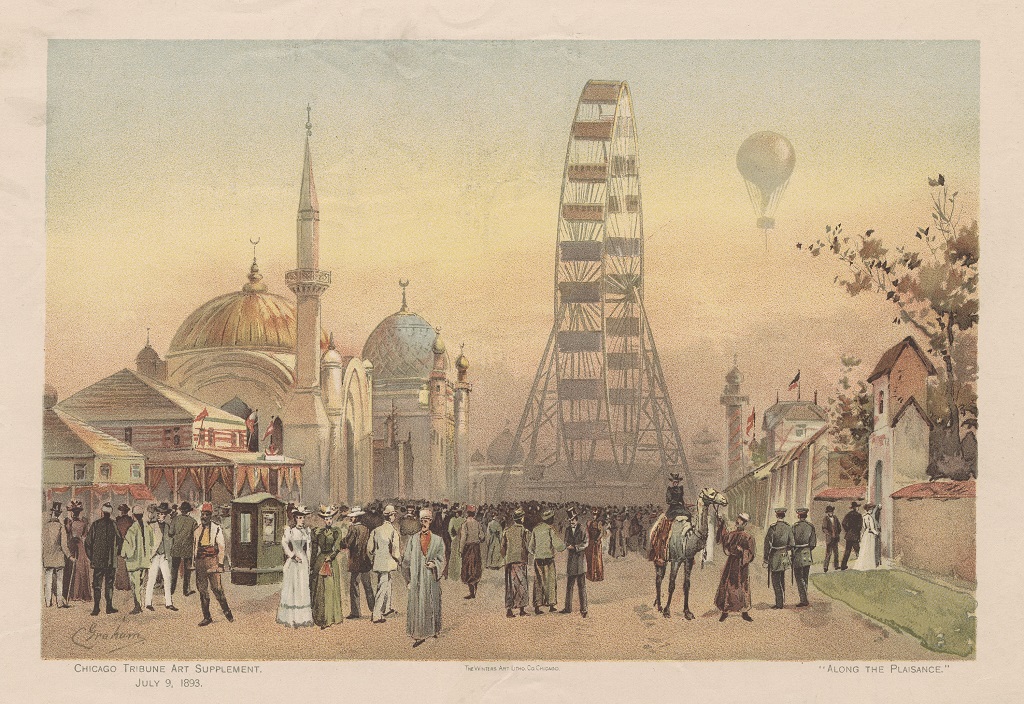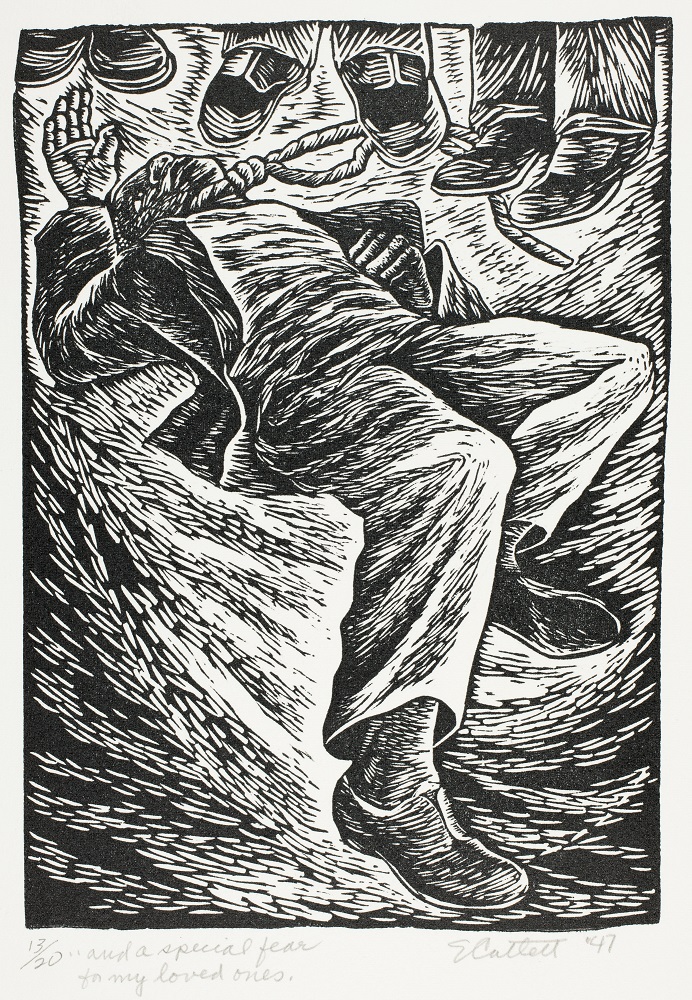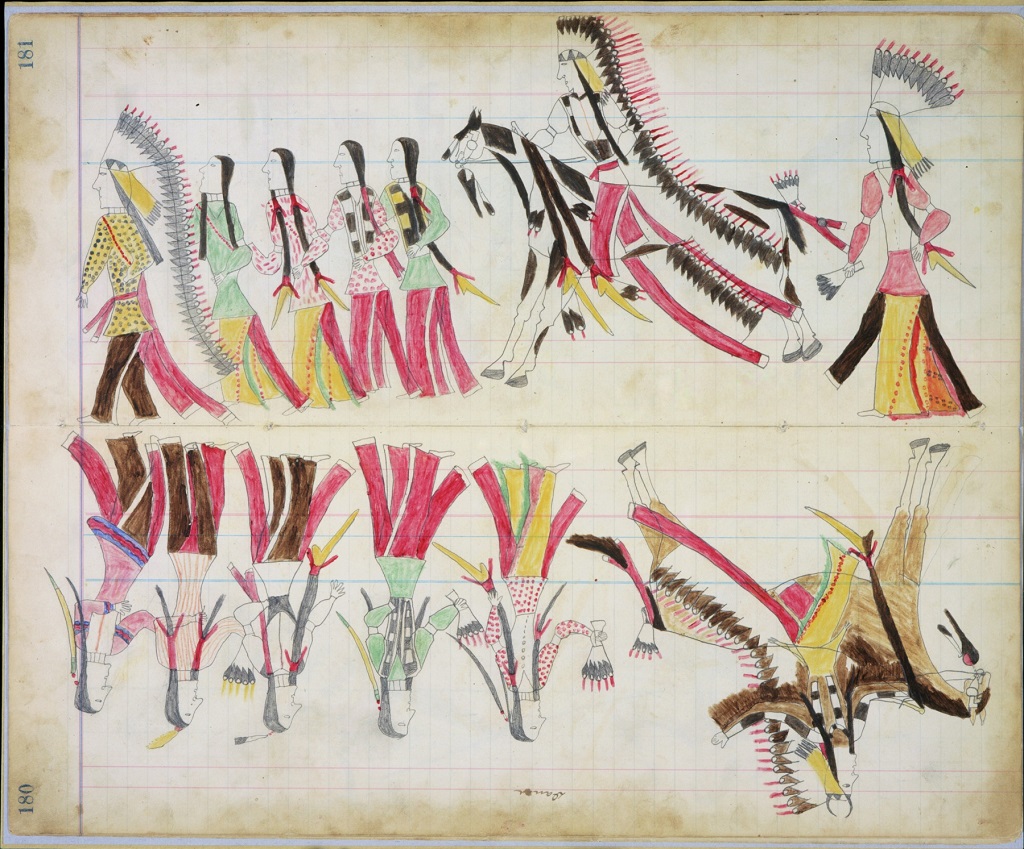Author:
Lisa Meyerowitz
At First Glance
What kind of journey does this painting depict? Cite evidence from the painting in your answer. Where are the figures coming from? How do you think the figures are feeling? Describe the elements of the image that make you think that. What might be the relationship between the figures? How do they interact with the landscape?
Read to Build Knowledge
Have you ever had a nightmare about being chased? Did you feel unable to move, yet somehow you reached your destination? Bernece Berkman’s Jews Fleeing War (1939) depicts four people moving through a deserted landscape as if in such a nightmare. A woman and a child move forward under the protection of a blue cloak. The woman’s face seems anxious, as if she is worried about being followed. Her large hand grips the small hand of her child, who also has an expression of worry or bewilderment. The young girl’s angled legs, one with a drooping red sock, suggest the chaos of their attempted escape. Behind them, a woman and a man carrying oddly shaped bags move in the same direction. Both wear scarves, and the figure on the top left covers her mouth with her hand—signs that they are hiding or running away. They cross a non-specific landscape of mountains and bare shrubs. It is a no-man’s land, except for white letters on the left that spell “RANCE”—hinting that it could be France, with the first letter “F” falling outside of the frame.
Given that this painting was made at the beginning of World War II (1939–1945), it likely shows a Jewish family fleeing the dangers of the Nazis. The canvas may reflect the journey of the artist’s father—a Jewish immigrant from Russia—and other Jews who were forced to abandon their homes in Europe and seek freedom elsewhere. Berkman herself was not an immigrant. She was born in Chicago in 1911 and briefly studied at the School of the Art Institute of Chicago. Like her teacher Todros Geller, Berkman was deeply committed to addressing social injustices in her work. She painted such themes in her own modern artistic style. She blended together elements of art movements that other European artists were participating in at the time, including Cubism and Expressionism. This style can be seen in Jews Fleeing War through Berkman’s use of sharp, flat geometric forms that break up the canvas, as well as in her expressive swirls of color used to depict the figures’ clothing and the landscape that engulfs them. Jews Fleeing War captures the dangers of migration—the struggle, the fear, and the emotional toll it takes on individuals. Berkman reminds us that leaving home is always difficult—especially when forced out by prejudice and hatred.
Analyze and interpret
- How does Bernece Berkman’s painting convey the physical and emotional difficulties of migration? What details of the migrants’ journey does the artist include?
- What do you see in the application of paint, style of lines, or colors that contributes to the sense of unease?
- This is not a “pretty painting.” Why do you think Berence Berkman chose to paint this difficult subject in such an expressive way?
For further reading (teachers)
Oehler, Sarah Kelly. They Seek a City: Chicago and the Art of Migration 1910–1950. Chicago: Art Institute of Chicago, 2013.
Weininger, Susan. “Bernece Berkman.” In Chicago Modern, 1893–1945: The Pursuit of the New, edited by Elizabeth Kennedy, 91. Chicago: Terra Museum and University of Chicago Press, 2004.
Weininger, Susan. “Bernece Berkman,” http://www.chicagomodern.org/artists/bernece_berkman/

